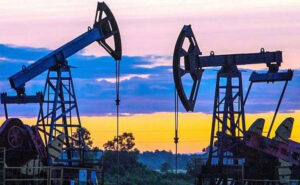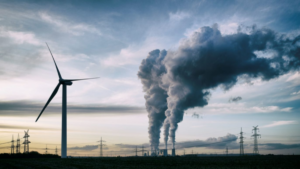
On January 1, 2025, the provisions of the law on state regulation of production and circulation of ethyl alcohol, alcohol distillates, bioethanol, alcoholic beverages, tobacco products, tobacco raw materials, liquids used in electronic cigarettes and fuel came into force in Ukraine, the State Customs Service (SCS) reported.
According to the amendments provided for by Law No. 3817-IX, the placement of these goods in certain customs regimes is allowed only if they have the relevant valid licenses or in storage facilities included in the register of the State Tax Service.
The State Customs Service reminded companies transporting ethyl alcohol, alcohol distillates, bioethanol, alcoholic beverages, tobacco products, tobacco raw materials, liquids used in electronic cigarettes, and fuel across the customs border of Ukraine to take this information into account during the next customs clearance of exported goods.

According to the results of 2024, the volume of natural gas production in Ukraine is estimated at 19.1 billion cubic meters, which is 400 million cubic meters more than in 2023 (18.7 billion cubic meters) and 600 million cubic meters more than in 2022 (18.5 billion cubic meters), said Artem Petrenko, Executive Director of the Association of Gas Producers of Ukraine (AGPU).
“According to preliminary estimates of our association, this year gas production in Ukraine will amount to about 19.1 billion cubic meters. Compared to 2023, we see an increase of more than 400 million cubic meters,” he said during an online meeting on the results of the year and prospects for the development of the energy sector of Ukraine at Energy Club on December 30.
According to the Executive Director, the positive trend of gas production growth in 2024 was ensured by both state-owned JSC Ukrgasvydobuvannya and PJSC Ukrnafta and private sector companies.
“Since August, the negative trend in private companies has been broken, and we have been recording an increase in gas production by private companies since August, and in five months they have managed to increase average daily gas production by more than 25%,” Petrenko said.
Also, according to preliminary data of the AGCU, more than 140 wells were drilled in Ukraine in 2024.
“This actually repeats the record-breaking year of 2023, when more than 150 wells were drilled. In total, over almost three years of full-scale invasion, gas producers have drilled more than 360 new wells,” the expert added.
According to him, since 2018, when the state provided incentives for drilling to Ukrainian gas producers, state and private companies have started drilling more than 720 wells in the country.
According to Petrenko, amid the ban on gas exports, Naftogaz of Ukraine continues to transparently buy gas on the Ukrainian Energy Exchange (UEEX) not only from producers but also from all market participants willing to sell gas on Naftogaz’s terms. According to the AGCU, since 2023, Naftogaz has purchased almost 2 billion cubic meters of gas at the UEEX.
“Under the conditions of closed exports, this is the only effective mechanism of cooperation between Naftogaz and participants, which is an incentive for private companies to increase gas production,” he emphasized.
At the same time, the Executive Director believes that in 2025, a negative factor for Ukrainian gas production will be the level of gas transmission tariffs, which the National Energy and Utilities Regulatory Commission (NEURC) increased for GTS Operator of Ukraine LLC by more than 4.5 times for internal entry points to the GTS starting January 1.
“This will affect not only state-owned companies but also private ones, as under the moratorium on gas price increases, it will reduce the investment opportunities of companies that they could direct to increase Ukrainian gas production,” Petrenko said.
As reported, gas transportation tariffs for internal entry points to the Ukrainian gas transmission system will increase 4.6 times from UAH 101.93 per 1 thousand cubic meters per day to UAH 464.37 per 1 thousand cubic meters per day starting January 1, 2025, and 4 times for external entry points, from UAH 124.16 per 1 thousand cubic meters per day to UAH 501.97 per 1 thousand cubic meters per day.

The Cabinet of Ministers of Ukraine has approved the document “On the Establishment of the Ukrainian Part of the Ukrainian-Japanese Joint Committee for the Implementation of the Joint Crediting Mechanism,” the Ministry of Environmental Protection and Natural Resources of Ukraine reported.
Earlier, Ukraine joined Japan’s Joint Crediting Mechanism (JCM). The goal of the program is to reduce greenhouse gas emissions by introducing the world’s leading technologies for decarbonizing various sectors of the economy through investments by Japanese organizations. Ukraine and Japan signed a memorandum of cooperation under Article 6 of the Paris Agreement earlier this year.
“This decision is important for achieving our climate goals through joint lending instruments. Japan is a promising partner on this path. Through joint lending, we will be able to attract Japanese technologies and innovative developments to reduce greenhouse gas emissions. This includes the implementation of the UN Framework Convention on Climate Change and the Paris Agreement, and the green recovery of Ukraine according to the latest practices,” Minister Svitlana Hrynchuk said in a statement on the Telegram channel on Tuesday.
It is noted that the next step will be to approve the composition of the committee and its regulations. The committee is created to coordinate efforts to strengthen bilateral cooperation in the fight against climate change. For its part, Japan has already completed all the preparatory steps to launch cooperation.
The JCM reportedly allows Japanese organizations to invest in decarbonization projects in partner countries. The reduced greenhouse gas emissions resulting from such projects are partly credited as Japan’s contribution to its own emission reduction targets and partly in the country where the project was implemented. Today, the JCM mechanism operates in 29 countries.
According to Hrynchuk, for Ukraine, this means access to Japanese technologies – some of the best in the world – and guaranteed investments for green recovery. This will be a tangible support in overcoming the consequences of Russian armed aggression.

According to the National Bank of Serbia (NBS), the country’s economy has achieved impressive results in 2024, becoming one of the most stable and fastest growing in Europe. The expected GDP growth is 3.8%, which is significantly higher than the European average. This was made possible by a prudent monetary policy, investment initiatives, and the successful recovery of key sectors of the economy after the global crises of recent years.
One of the most significant events of the year was the assignment of an investment credit rating to Serbia. This status strengthens the confidence of international investors in the country, opening access to more favorable financial conditions and attracting large investments. Experts emphasize that this step is an important incentive for further economic growth.
An important economic achievement was the successful reduction of inflation to the target range of 3% ± 1.5%, which was achieved in May 2024. Since then, the inflation rate has remained stable, which demonstrates the high efficiency of the measures taken by the National Bank.
Throughout the year , Serbia demonstrated the stability of the dinar against the euro. This not only strengthens the confidence of the population and business, but also attracts the attention of foreign companies that view Serbia as a reliable economic partner.
The Serbian government continues to actively support small and medium-sized businesses by introducing preferential lending terms and subsidy programs. In 2024, significant funds were also allocated for the development of infrastructure, agriculture, and the IT sector, which created new jobs and improved the business environment.
The economic achievements of 2024 have strengthened Serbia’s position as one of the leaders among Europe’s emerging economies. New challenges and goals lie ahead, including further reducing inflation, developing export potential, and improving the quality of life. The country’s leadership is confident that the increased pace of reforms will allow the country to maintain its positive momentum in the coming years.
These results are proof of the resilience of the Serbian economy and its ability to adapt to modern challenges, which strengthens the country’s position in the international arena.

Croatia has a multi-level taxation system that covers both legal entities and individual entrepreneurs (IEs). Let us consider the main taxes applicable to these categories of taxpayers.
Main taxes for legal entities in Croatia:
There are separate taxes for individual entrepreneurs.
Other taxes and fees
The Croatian tax system is characterized by progressive and diverse taxes, which requires careful planning and accounting when doing business.It is recommended to consult with professional tax advisors to ensure compliance with current legal requirements and optimize the tax burden.
Source: http://relocation.com.ua/osoblyvosti-systemy-opodatkuvannia-v-khorvatii/

On behalf of Foreign Minister Antonio Tajani, Italy has allocated EUR 13 million to the Energy Support Fund for Ukraine.
“At a time when attacks on Ukraine’s energy infrastructure are intensifying, this decision is an important step in efforts to restore energy systems damaged by the conflict. Italy’s contribution – one of the largest for a single country – will help stabilize the supply of electricity to millions of war-affected Ukrainians in this difficult time,” the Italian Foreign Ministry said on its website.
It is noted that with this contribution, Italy confirms its continued support for the resilience of Ukraine’s energy sector, in particular in connection with the conference on Ukraine’s recovery to be held in Rome next July.